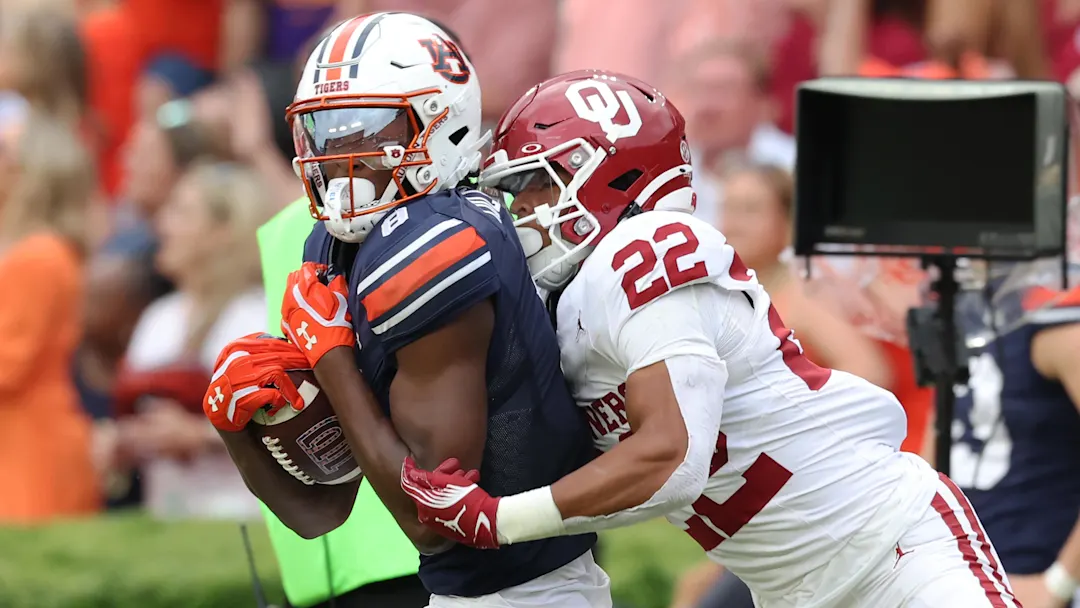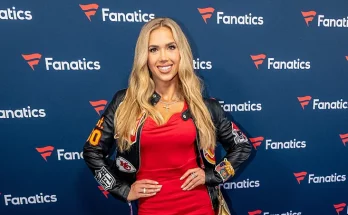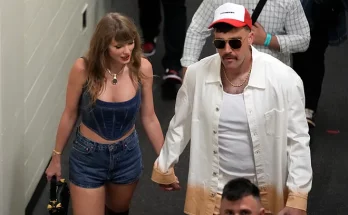The Oklahoma Sooners are no strangers to transition. One of college football’s most storied programs, they’ve seen legends come and go, dynasties rise and fall, and rosters evolve year after year. But the departure of Billy Bowman ahead of the 2025 season feels different. It marks the end of an era in the Sooners’ secondary—a chapter defined by explosive playmaking, leadership, and consistency. Bowman wasn’t just a safety; he was the anchor of the defense, a spark plug who could change the outcome of a game in a single play. Replacing him is no small task, but Oklahoma’s coaching staff has been preparing for this moment, unveiling a bold plan that mixes experience, raw talent, and calculated risk to ensure the secondary remains a strength.
Bowman’s presence over the past few seasons elevated Oklahoma’s defense. He was a ball hawk, a tackler, a communicator—an all-around game-changer. Whether it was shutting down deep threats, blitzing off the edge, or covering ground sideline to sideline, Bowman set the tone for the entire unit. His instincts and football IQ made him indispensable. But his NFL aspirations, rightfully pursued, now leave a glaring void. The coaching staff, led by defensive coordinator Zac Alley and head coach Brent Venables, have made it clear: there’s no replacing Billy Bowman with just one player. It’s going to take a collective effort and a reshaped identity on the back end of the defense.
Enter the new wave of Sooners safeties. Among the most likely to step into a starting role is sophomore Kani Walker, a former Louisville transfer who’s patiently waited for his opportunity. Walker showed flashes in rotational duty last season, demonstrating solid coverage skills and a willingness to step up in run support. Coaches love his length and athleticism, and while he may not have Bowman’s résumé, he brings his own unique toolbox. Walker has been grinding all offseason, working with the first team in spring practices and earning praise for his improved communication and understanding of the system. He’s not trying to be Bowman—he’s trying to be the best version of himself, and the staff is confident that version can thrive.
Oklahoma also added reinforcements through the transfer portal, including an intriguing addition in former Michigan safety Zeke Berry. A hard-hitting junior with Big Ten experience, Berry brings toughness and maturity to the locker room. His ability to play both free and strong safety gives the Sooners flexibility, something they’ll need in a post-Bowman defense. Berry’s track record at Michigan included key starts, forced turnovers, and a reputation for physical play. He’s already making an impression in Norman with his leadership and voice on the field. For a team needing a veteran presence in the secondary, Berry checks every box.
Freshman standout Elijah Thomas is another name to watch. A top-100 recruit out of the Dallas area, Thomas arrives with immense hype and athletic gifts that jump off the tape. While expecting a true freshman to replicate Bowman’s production is unrealistic, Thomas could be a rotational contributor early, particularly in nickel and dime packages. His speed and instincts are rare, and if he continues to grasp the playbook quickly, don’t be surprised if he plays a significant role by midseason. Oklahoma’s staff has shown a willingness to trust young players in big moments, and Thomas’s upside might be too enticing to keep off the field.
Another internal candidate is senior Key Lawrence, a versatile defender who has spent time at both safety and cornerback throughout his Oklahoma career. Lawrence brings valuable experience and a high football IQ. He understands the demands of Venables’ complex defensive schemes and is comfortable wearing multiple hats. His physicality and open-field tackling are among his strengths, and he’s likely to be used in various sub-packages depending on the matchup. With a full offseason to prepare for a larger role, Lawrence could be the veteran glue that helps the secondary stay cohesive through the early growing pains.
The coaching staff isn’t just focusing on individuals—they’re also adjusting schematically to reflect the post-Bowman era. While Bowman’s elite range allowed the Sooners to get creative with coverages and blitz packages, the new approach is expected to be more conservative early in the season. Look for more two-high safety looks, designed to keep everything in front and limit explosive plays. The emphasis will be on communication, discipline, and assignment-sound football. Coaches have emphasized that while they’ll miss Bowman’s playmaking, the defense as a whole may benefit from being more balanced and less reliant on one star.
Spring ball offered a preview of what’s to come. Practices were competitive, and the defense showed signs of a renewed edge. Position coach Brandon Hall has been instrumental in building chemistry among the new safety unit, and players are responding to the challenge. Several defenders have commented publicly about wanting to honor Bowman’s legacy not by mimicking him, but by raising their own standards. That mindset has fueled a healthy competition that could ultimately produce a deeper, more versatile safety group.
Oklahoma’s fan base, always passionate and always vocal, has responded with a mix of concern and optimism. On one hand, Bowman’s loss is significant—he was a game-breaker. On the other, this is Oklahoma, where talent is never in short supply. The Sooners have a track record of developing defensive stars, and the infrastructure is in place for the next breakout to emerge. The 2025 season may be one of transition, but it’s also one of opportunity. A defense that leaned on one man is now evolving into a unit that can win by committee.
Bowman’s leadership off the field will be missed just as much as his production on it. He was a mentor to younger players, a film room junkie, and a vocal leader in the locker room. Filling that void is perhaps the hardest part of all. The staff has made culture a focal point of the offseason, emphasizing accountability and communication. Players have taken on leadership roles naturally, and the hope is that a new core of vocal leaders emerges as the season unfolds.
Beyond the safety position, Bowman’s absence will ripple through the entire defense. Linebackers may have to take on more responsibility in coverage, corners may have to be more aggressive, and defensive linemen may need to generate more pressure to help protect the back end. It’s a full-system recalibration, one that the staff has embraced with urgency and creativity.
In the big picture, Bowman’s legacy at Oklahoma is secure. He leaves behind a highlight reel that will be played for years and a reputation as one of the best safeties to ever wear the crimson and cream. But as is always the case in college football, the focus quickly shifts to who’s next. The Sooners believe they have not just one answer, but several. A mixture of experienced veterans, hungry transfers, and talented newcomers are ready to rise.
As the countdown to the 2025 season begins, the message from the staff is clear: this is not about replacing Billy Bowman—it’s about writing a new chapter. One that honors the past while embracing the future. One where a group of hungry defenders step out of the shadows and into the spotlight. And one where the Sooners, yet again, find a way to turn transition into triumph.



